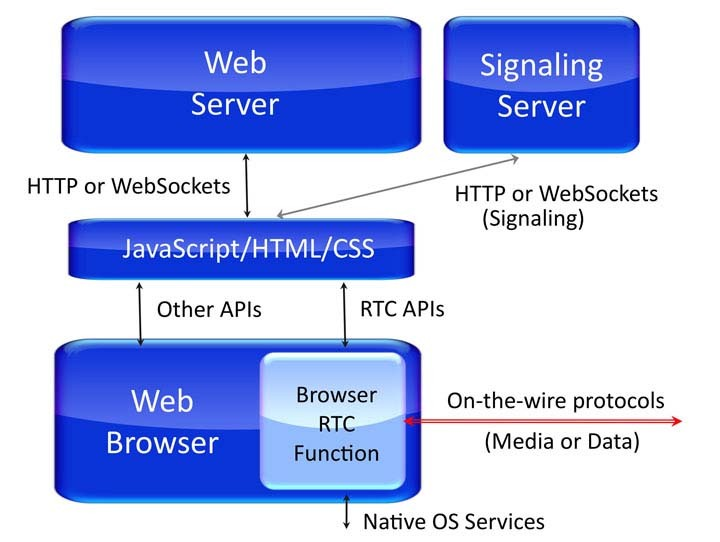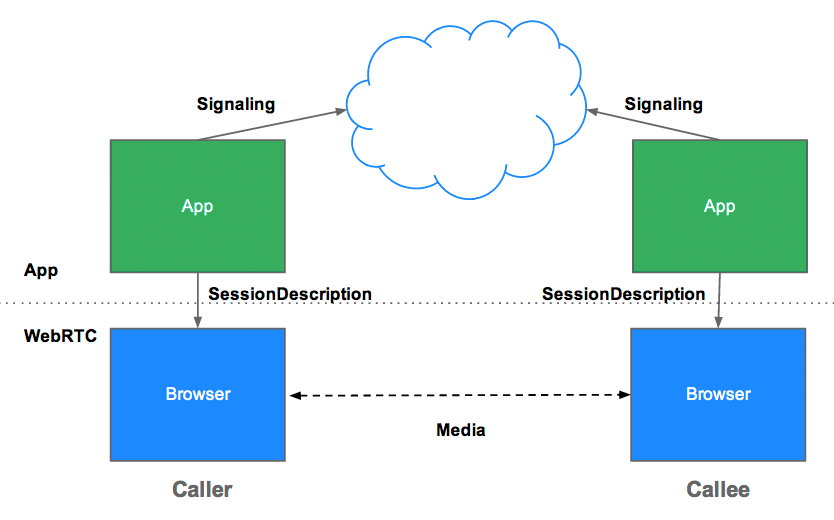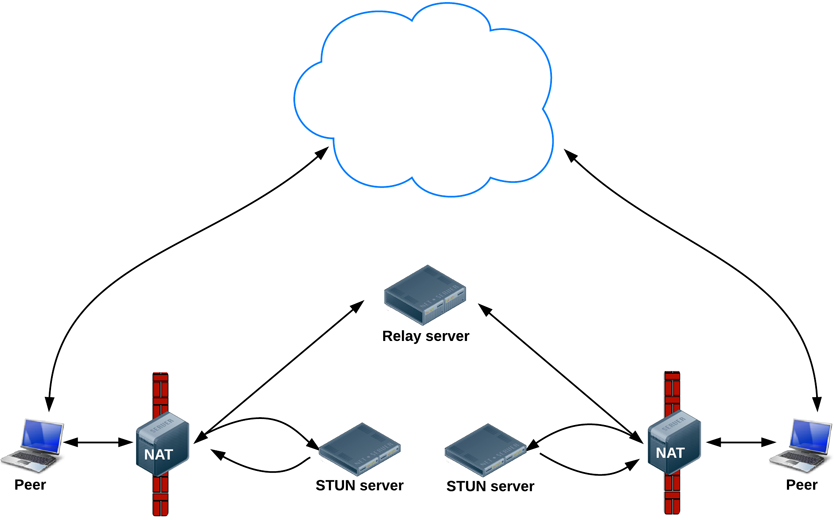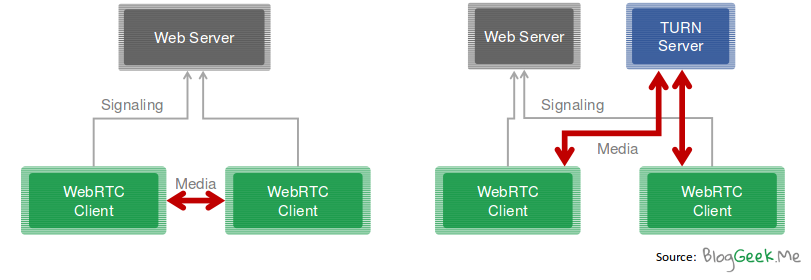WebRTC
WebRTC
- Real Time Communication in the browser
- Peer to peer (WebRTC is the only P2P technology in web browsers)
- Intersection of VoIP and Web
- Released in 2011 by Google as an open-source project
- It is being worked on by both IETF and W3C (technical standards organizations)
WebRTC

Three main JS APIS
- MediaStream (Aquiring audio and video)
- RTCPeerConnection (Does everything.. sets up the connection and sends audio and video, etc)
- RTCDataChannel (low latency arbitrary data)
Where is it available?
- There are SDK for mobile, PC and embedded systems

History
- Nov 2011: Chrome releases webRTC
- Jan 2013: Chrome adds webRTC
- Feb 2013: Interoperability
- Sep 2013: Firefox and Chrome add support for the Android versions
- Mar 2014: Opera and Opera for Android support webRTC
- Oct 2014: Microsoft announces ORTC (WebRTC 1.1)
MediaStream
RTCPeerConnection does a lot of work
- Signal Processing
- Codec Handling
- Echo cancellation
- Noise reduction
- P2P Communication (through firewalls and NATs)
- Security
- Bandwidth Management
RTCDataChannel
- It sends data over an existing PeerConnection
- The API is similar to webSockets
- Low latency
- Unreliable or reliable
General process

Signaling
- Signaling needs servers
- Browsers exchange ‘session description’ objects
- What formats are supported, what to send
- Network information for peer to peer setup
Signaling

- Description Protocol format (SDP) looks like this:
v=0
o=- 7614219274584779017 2 IN IP4 127.0.0.1
s=-
t=0 0
a=group:BUNDLE audio video
a=msid-semantic: WMS
m=audio 1 RTP/SAVPF 111 103 104 0 8 107 106 105 13 126
c=IN IP4 0.0.0.0
a=rtcp:1 IN IP4 0.0.0.0
a=ice-ufrag:W2TGCZw2NZHuwlnf
a=ice-pwd:xdQEccP40E+P0L5qTyzDgfmW
a=extmap:1 urn:ietf:params:rtp-hdrext:ssrc-audio-level
a=mid:audio
a=rtcp-mux
a=crypto:1 AES_CM_128_HMAC_SHA1_80 inline:9c1AHz27dZ9xPI91YNfSlI67/EMkjHHIHORiClQe
a=rtpmap:111 opus/48000/2
…Signaling
- There is no defined protocol to do the signaling on webRTC
- The decision is left to the developer
- Options: Ajax, Websockets, DataChannel, SIP or XMPP/Jingle
NAT Traversal
- NAT devices are used to alleviate IPv4 address exhaustion by allowing the use of private IP addresses on home and corporate networks behind routers with a single public IP address facing the public Internet.
- The Nat-traversal protocols used by WebRTC are ICE, STUN, and TURN
- Special servers are needed to set the connection.
NAT Traversal

STUN
- Tells me what my public IP address is.
- Simple server, cheap
- With the information, webRTC can perform NAT hole punching
STUN

TURN
- STUN works around 80% of the time
- TURN as is used as a fallback media relay
- Data is sent through the TURN server
TURN

ICE
- Tries to find the best path for each call
- It uses STUN if it can
- ICE uses a technique known as “hole punching”
Resources
- WebRTC book: http://webrtcbook.com
- Google demos: https://github.com/googlechrome/webrtc
- webRTC blog: http://bloggeek.me
DEMO
WebRTC
By elas
WebRTC
This presentation was preceded by the websockets one made by Rodrigo Espinosa Curbelo, here are the slides: https://speakerdeck.com/rec/real-time-web-applications-for-existing-no-nodejs-apps
- 927